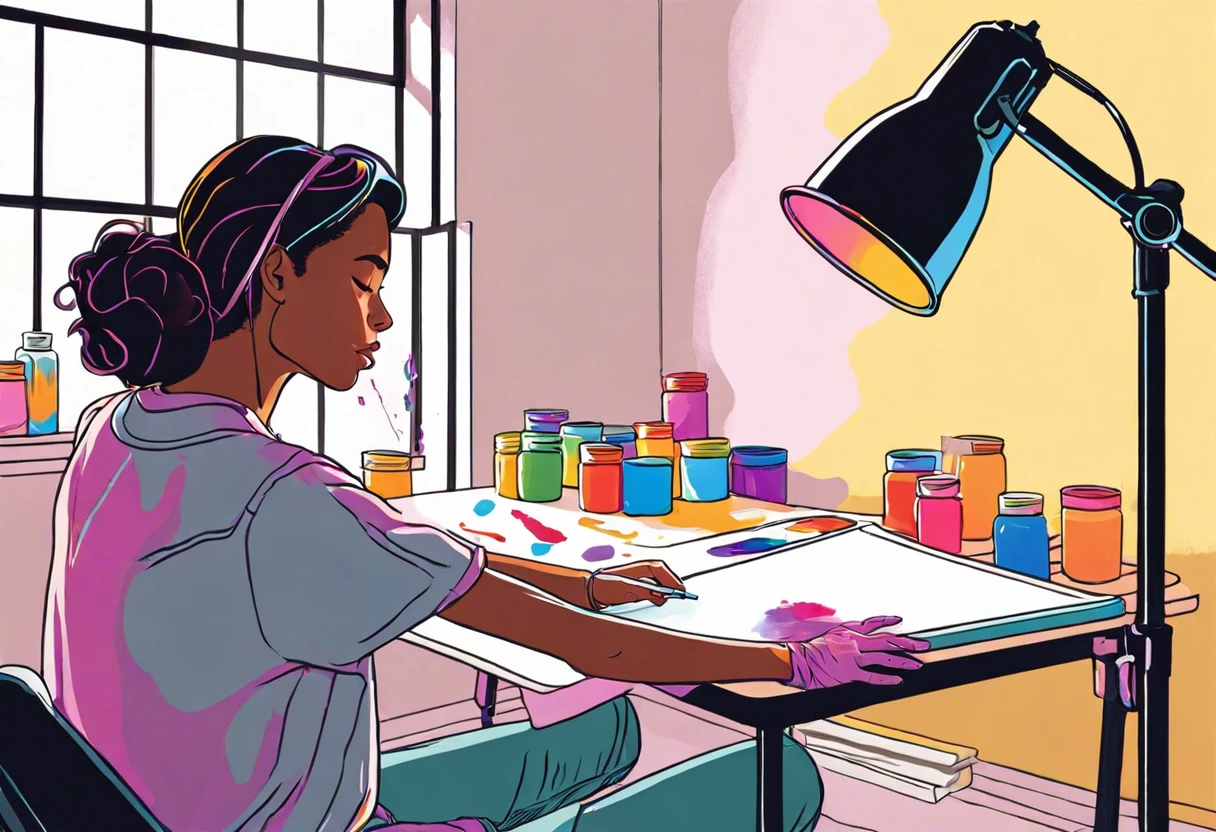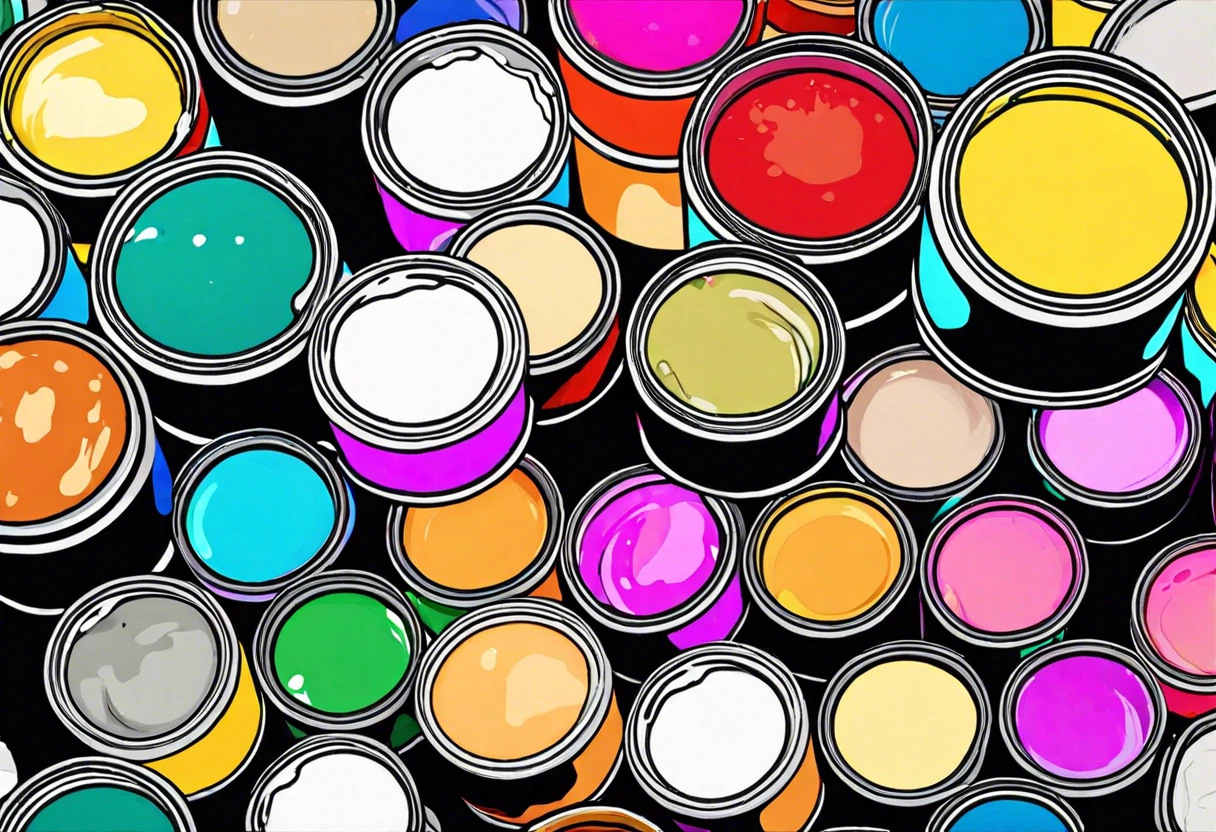Can You Tint Primer With Paint?
Published on: June 10, 2025 | Last Updated: January 7, 2025
Written By: Sarah McClintock
Primer is like a special undercoat for your walls. It helps paint stick better, sort of like glue for your color.
Can you tint primer with paint? It’s important to know because the right color can make your topcoat look awesome. I’ve tried it myself, and trust me, it can really elevate your whole project.
In this article, you’ll learn about what primer is, essential things to consider before you start, steps for tinting primer with paint, and common problems that arise. We’ll dive into different types of primer, a recommended color palette for tinted primers, and creative DIY projects that use tinted primer.
Contents
- 1 Can You Tint Primer With Paint?
- 2 What is Primer?
- 3 Essential Considerations Before You Start Tinting Primer
- 4 Steps to Successfully Tint Primer With Paint
- 5 Recommended Color Palette for Tinted Primers
- 6 Understanding Different Types Of Primer for Tinting
- 7 Factors Affecting the Tinting Process Of Primer With Paint
- 8 Common Issues When Tinting Primer With Paint
- 9 Finishing Touches After Tinting Primer
- 10 Best Practices for Tinting Primer with Paint
- 11 Comparing Tinted Primer to Traditional Primer
- 12 Alternative Methods for Tinting Primer
- 13 How Tinted Primer Affects Final Paint Finish
- 14 Frequently Asked Questions About Tinting Primer With Paint
- 15 Conclusion on Tinting Primer With Paint
- 16 Useful Resources
Can You Tint Primer With Paint?
Yes, you can tint primer with paint. Mixing a little paint into your primer lets you achieve a specific shade or color. Just keep in mind; it’s best to use the same brand of paint and primer for the best results. This helps the colors blend and adhere better. If you’re looking to transform surfaces like an old cast iron tub, painting techniques can revitalize your space.
What is Primer?
Primer is a preparatory coating applied before painting. It ensures better adhesion, longer-lasting results, and enhanced appearance. Studies show that using a primer can increase paint durability by up to 40%. When working with paints and primer techniques and safety, it’s crucial to be aware of potential chemical exposure risks, especially paint thinner absorption through skin.
Can you tint primer with paint? I’ve tried it, and it can change the whole vibe of your project.
When I was working on my bedroom makeover, I used a tinted primer for painting walls. It added a warm glow to the walls that the base paint wouldn’t have achieved alone. Tinted primer can help when you want a lighter final color, reducing the number of coats needed. So, consider the option of mixing primer with paint to lighten the color; it opens up creative possibilities!
Essential Considerations Before You Start Tinting Primer
What do you need to get ready?
- High-quality primer: You’ll need a product like Zinsser B-I-N Shellac-Based Primer. It’s crucial for bonding with the surface and enhancing paint adhesion.
- Universal colorant: Have a colorant such as Benjamin Moore Gennex Colorant ready. It’s essential for achieving the desired tint during mixing.
- Mixing tools: You need tools like a paint stirrer or drill mixer. They’re critical for evenly blending the primer and colorant to ensure consistent color.
- Measuring cups: Use precise measuring tools like a 1 cup (0.24 L) measuring cup to mix exact amounts of primer and colorant for the best results. Accurate ratios ensure consistent tinting.
- Protective gear: Don’t skip gloves and goggles. You’ll encounter chemicals that require safety measures to keep you safe while working.
So far we covered key factors to think about before tinting primer. Let’s look at the steps for successfully tinting primer next.
Also See: What is LRV for Paint? It’s Key for Choosing Colors!

Steps to Successfully Tint Primer With Paint
Now, let’s dive into the steps for tinting primer with paint for your projects.
-
Choose the Right Base Primer
Select a high-quality primer designed for the specific surface you’re working on—whether it’s wood, drywall, or metal. A latex-based primer works best with water-based paints, providing a smoother finish. If you’re tackling a challenging surface like a cast iron bathtub, you’ll want to explore specialized painting techniques for metal.
Different surfaces may require different primers. For example, if you’re painting over stained wood, choose a stain-blocking primer to prevent bleed-through.
-
Select the Appropriate Paint
Use a compatible paint for tinting your primer. Water-based paints suit latex primers, while oil-based paints are ideal for oil-based primers. This compatibility ensures better adhesion and color mixing. If you want to explore creative techniques for enhancing your primer’s color, candle painting offers unique methods.
Choosing the right hue significantly impacts the final look. Lighter colors might need more tinting—generally, a 10% paint-to-primer ratio provides a good base without overpowering.
-
Measure the Paint and Primer Accurately
Measure your primer and paint carefully for a reliable mix. It’s vital to maintain a proper 1:10 ratio for effective tinting—one part paint to ten parts primer—for optimal color results.
Use a graduated measuring container for precision when combining the two. Use mixed colors promptly to prevent pigment settling.
-
Mix Thoroughly
Blend your primer and paint well until there are no streaks. An electric paint mixer can help achieve a uniform texture efficiently and save you from manual stirring fatigue.
A thorough mix is crucial for consistent color across your surface. For best results, mix for several minutes—aim for a smooth, even consistency without lumps.
-
Test the Tinted Primer
Paint a small test patch on the intended surface to check how the tinted primer looks when dried. This can save time and effort later, ensuring the color complements your space.
After 24 hours, evaluate the finished color—drying may reveal slight shifts in shade. If needed, adjust the mixture and retest until you’re satisfied with the result.
So far, we covered how to effectively tint primer with paint. Let’s look at the ideal color palette for tinted primers next.
Recommended Color Palette for Tinted Primers
I recommend the Ocean Breeze palette for tinted primers. This scheme flows beautifully, featuring a soothing main blue, fresh accents, and complementary tones that blend seamlessly.
| Color Box | Hex Code | Color Name |
|---|---|---|
| #1E90FF | ||
| #00BFFF | ||
| #AFEEEE | ||
| #E0FFFF |
We have now covered the suggested color schemes for tinted primers. Next, we’ll explore the various primer types used for tinting.
Understanding Different Types Of Primer for Tinting
Let’s discuss the various types of primers for tinting: Oil-Based, Water-Based, Shellac, and Stain-Blocking primers.
-
Oil-based Primer
Oil-based primers create a smooth finish and prevent bleed-through on stained surfaces, making them ideal for wood.
-
Water-based Primer
Water-based primers dry quickly and are easy to clean. They work well on drywall and can be tinted, but may need a lighter topcoat, like eggshell or satin.
-
Shellac Primer
Shellac primers dry quickly and seal stains and odors. They’re ideal for tough spots and can be used over water-based paint.
-
Stain-blocking Primer
Stain-blocking primers prevent leaks and rust, making them great for kitchens and bathrooms. You can confidently apply colors over stained areas.
I’ve often found that oil-based primers are my go-to for wood projects. Their ability to stop bleed-through simplifies the work, especially with rich colors.
We covered the various types of primer used for tinting. We will now cover the factors influencing the tinting process.

Factors Affecting the Tinting Process Of Primer With Paint
What factors influence the ability to tint primer with color? Here’s the scoop.
-
Type of Primer: The primer’s base affects how it absorbs pigments.
-
Paint Ratio: Using more paint than primer can lead to inconsistent color.
-
Colorant Type: Some colorants are more effective in primer, impacting the final hue.
-
Intent of Use: Tinting may not be effective under certain paint types.
Common Issues When Tinting Primer With Paint
Once, my friend tried to tint primer with paint but ended up with a muddy color. She learned that not all primers accept paint evenly.
To fix this, use a tint specifically designed for primer. Tip: Mix in about 10% paint to avoid overpowering the primer’s adhesive properties. Balance is crucial!
Finishing Touches After Tinting Primer
After tinting the primer, let it cure for at least 1 hour before application. Ensure a consistent texture by mixing in a controlled environment at 21°C (70°F) with low humidity.
Inspect adhesion after application; it’s crucial. Check areas where the tinted primer meets different surfaces—there should be no bubbling. Use a brand like Zinsser for good adhesive performance.
If you’ve got a few years of experience with complex projects, consider adjusting your spray gun pressure to around 138 kPa (20 Psi) for optimal dispersion. This pressure ensures even coverage without overspraying.
Best Practices for Tinting Primer with Paint
Want to ensure you get the most out of your tinted primer? Here are some tips to guide your process.
-
Stick to One Brand
Using primer and paint from the same brand improves compatibility. Brands often design their products to work together.
-
Test Small First
Always test a small amount before committing to a large batch. This helps you see the final shade and adhesion quality.
-
Use a Stir Stick
A stir stick is your best friend. Mix your primer and paint thoroughly for an even color. Aim for 3-5 minutes of mixing to avoid streaks.
-
Store Properly
If you have leftover tinted primer, store it in a cool, dark place. This can help preserve the quality for future use.
Comparing Tinted Primer to Traditional Primer
How does tinted primer stack up against traditional primer? Here’s a quick comparison.
| Aspect | Tinted Primer | Traditional Primer |
|---|---|---|
| Color Customization | Allows for personalized shades | Limited to available shades |
| Coverage Efficiency | Reduces number of coats needed | May need multiple layers |
| Adhesion Properties | Enhanced with certain colors | Good but not color-dependent |
| Cost Efficiency | Can save on paint costs | May require extra paint |
Alternative Methods for Tinting Primer
Wondering about other ways to enhance your primer? Let’s explore some alternatives!
-
Using Ready-Mixed Tinted Primers
Many brands offer pre-tinted primers. This means you don’t have to mix at all! Just grab a can in the color you want and apply.
-
Adding Tints Specific for Primers
Specialized tints are available that are designed just for primers. They mix easily and ensure better adhesion, giving your finished surface a clear edge.
-
Utilizing Colored Sealers
Some folks opt for colored sealers instead. These products can work well to give your surfaces color while still providing protection.
How Tinted Primer Affects Final Paint Finish
Curious about the impact of tinted primer on your final look? Let’s break it down.
| Factor | Effect of Tinted Primer | Final Appearance |
|---|---|---|
| Color Depth | Tinted primer can deepen and enrich the final color | Creates a more vibrant look |
| Coat Reduction | Tinted primer often reduces the number of required top coats | Less texture and more uniform finish |
| Adhesion | Tints specifically designed for primers improve paint stick | Enhanced durability post-application |
Frequently Asked Questions About Tinting Primer With Paint
What Are the Benefits Of Tinted Primer?
Tinted primer offers several benefits for painting projects. It enhances paint adhesion and can improve the overall color of topcoats, leading to vibrant finishes. Statistics show that using tinted primer can reduce the number of color coats by 30%, saving you time and materials.
Can Any Paint Be Used to Tint Primer?
No, not all paints can be used to tint primer. It’s best to use water-based or latex paints for this purpose, as they mix seamlessly with water-based primers. Using incompatible paint types may cause poor adhesion or uneven color. If you’re curious about expanding your painting techniques, you might want to explore creative painting methods beyond traditional surfaces.
How Much Paint Should I Use to Tint Primer?
You should typically use about 10-20% of the paint volume to tint primer. For example, if you have 3 liters (0.79 Gallons) of primer, add approximately 300-600 milliliters (10-20 Fl Oz) of paint to achieve a desired hue. If you’re looking to apply this technique to specific surfaces like bathroom fixtures, you might want to explore painting techniques for bathtub surrounds.
Can Tinted Primer Be Used Alone Without Topcoat?
Yes, tinted primer can be used alone without a topcoat. It offers decent coverage and can serve as a standalone base in low-traffic areas. However, a topcoat provides durability and protects the finish in high-use spaces. If you’re working with specialized surfaces like polycarbonate panels, you might want to explore specific painting techniques for painting clear polycarbonate plastic.
Is It Easy to Tint Primer at Home?
Yes, it’s easy to tint primer at home. With just a few tools, such as a stir stick and a container, you can mix in paint until you achieve your desired shade. Just remember to test the mix before applying to your project surfaces! If you want to explore advanced techniques for creating smooth color transitions, check out these acrylic painting techniques.
Also See: How Can You Get a Painting Appraised? Find Out Now!
Conclusion on Tinting Primer With Paint
That’s everything I wanted to share with you. We covered what primer is, essential considerations before tinting, steps for success, a color palette for tinted primers, types of primers, factors affecting the tint, common issues you might face, finishing touches after tinting, creative DIY ideas, and answered some frequently asked questions.
Happy to say, yes, you can tint primer with paint. This process allows for better coverage, smoother results, and you can even mix 30-50% of paint with your primer for optimal color. It’s all about prepping right and knowing your products.
If you’re interested in more insights, I encourage you to explore what Paint Answers has to offer.
Useful Resources
- Betti, C., & Sale, T. (2012). Drawing: A Contemporary Approach (6th ed.). Belmont, CA: Cengage Learning.
- How to Tint Primer
- Tinting Primer – Fine Homebuilding
- Tinted Primer | Professional Painting Contractors Forum




